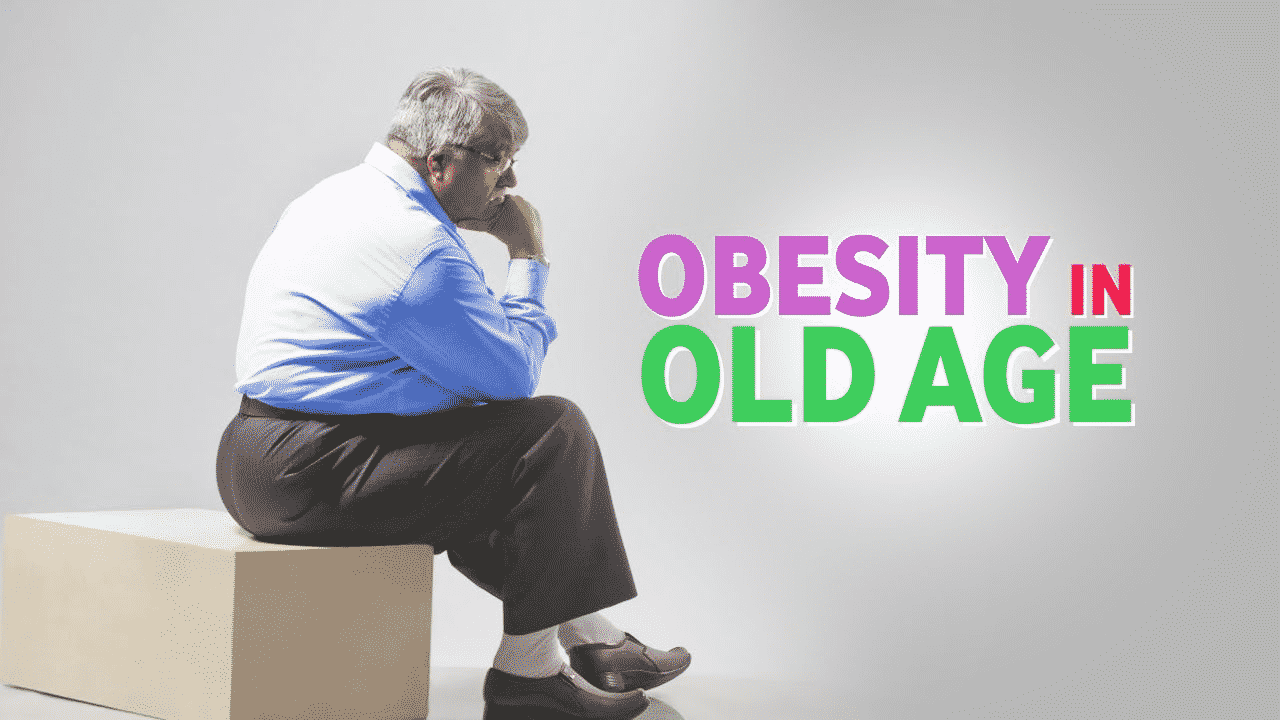
Challenges in the Management of Geriatric Obesity in High-Risk Populations
Overview:
Our country is said to become the World’s Economic Powerhouse by 2050, surpassing China, this majorly attributed to the rise in population our country possesses. With the rapid growth of the economy, the income of the individuals has risen. The increase in revenue has its adverse effects in the form of altered lifestyle, which in turn has its devastating effects on an individual’s health. Off all the health conditions, obesity, and its contributory health conditions seem to be posing a higher risk to the common folk. The irony is that with the growth in our country’s economy, we have malnourishment and poverty at one end of the spectrum and obesity and allied medical conditions at the other end.
Obesity in India has become rampant in the last decade or so, not just in adults and elderly, but also in children as young as 13 years. Obesity in the elderly was a matter of enormous concern in the developed countries, which has now spread to developing countries, such as India, as well. The spike in geriatric (relating to old/older adults) obesity ranges 8% to 38% in rural and 13% to 50% in urban areas for all age groups combined. Let us delve into the causes and risk factors of geriatric obesity and the various factors that need attention when developing a treatment program for obesity.
What is Obesity?

Obesity, as we all know, is the accumulation of excess body fat, and food intake results in storage of proteins and fat. This body fat dissolves when the body does some vigorous activity which may include performing tasks at the office, doing household chores, performing exercises at home or in a gym.
When the body has a sedentary lifestyle, intake of food which is high in calories and fat, and lack of performing exercises, obesity plays a prominent role in the development of type-2-diabetes mellitus, hypertension, dyslipidemia, coronary heart disease, low-self esteem, anxiety, depression, and many cancers. Based on the environment, geographic location, obesity is a general medical condition, which can be treated.
How do we measure obesity?
There are various methods or tests to determine if an individual is fat or fit, such as:
- BMI (Body Mass Index)
- Waist Circumference
- Waist-to-Hip ratio
- Skinfold Thickness
- BIA (Bioelectric Impedance)
- Underwater weighing (Densitometry)
- Air-Displacement Plethysmography
- Dilution Method.
Off all these, BMI is considered the standard method of measuring an individual’s excess weight, although some belief it to be an imperfect method of assessment. BMI measures body weight over height, but how about an individual who plays contact sports, has an athletic build and is short in stature? Bearing the shortcomings of this method, physicians have also considered using Waist Measure as well. Waist measure is regarded as an ideal indicator of weight-related issues.
A waist circumference of 94 cm in men and 80 cm in women shows that these individuals are prone to risks associated with excess body weight.
Difference Between Overweight and Obesity:
Individuals with a BMI in the range of 25–29.9 are considered overweight, and those with a BMI of 30 or higher are in various stages of obesity. This sums up the difference between overweight and obesity.
Obesity in the Elderly:

Older adults with obesity fall into the category of high-risk individuals who are prone to inherit co-morbidities of obesity such as heart diseases, diabetes, hypertension, dyslipidemia, and various cancers. Psychological ailments such as low-self esteem, anxiety, depression are also a possibility.
Treating an obesity patient who is below the age of 55 years is relatively easy when compared to treating those beyond 55 years of age. This has to do with the fact that elderly patients restrict their activities mainly exercising due to orthopedic conditions, food intake due to indigestion, ability to follow treating physician’s treatment plan because of dependency on others, and sarcopenia.

Sarcopenia: Human body is such that it gains body/muscle as we grow up and sheds the muscle as we grow old. This natural phenomenon of losing body muscle with age is called sarcopenia. The process of sarcopenia starts in the late 20s or early 30s. It is a rather slow process which intensifies in the old age.
One interesting fact about obesity has to be noted, called Obesity Paradox. Obesity in young adults could be lethal sometimes, shortening the life expectancy rate from various health conditions associated with obesity, especially cardiovascular diseases. Although older obese individuals are prone to cardiovascular diseases, being overweight makes them more immune from other diseases. For individuals who are above 75 years of age, the risk of death from all medical conditions, especially cardiovascular diseases, seem to come down with increasing BMI.
Although Obesity Paradox is real, as supported by many studies, this applies to individuals who survive until 75 years of age.
Challenges Posed on Management of Geriatric Obesity:

The following are various health conditions associated with diabetes. Chalking out a treatment plan to manage diabetes would not be considered wholesome if it does not take into account the associated co-morbidities of obesity.
Cardiovascular Mortality and Morbidity: The risk of cardiovascular disease depends heavily on hereditary, habits, and lifestyle. Obesity can elevate bad cholesterol, triglyceride levels; also lower good cholesterol (HDL). HDL is known for removing bad cholesterol from the body and reduces the risk of heart diseases. So, on the whole, obesity increases the morbidity and mortality rates associated with heart disease.
Cancer Incidence: Researches did on obese patients to ascertain the health implications brought about by obesity have shown that higher amounts of body fat increase the risk of many cancers.
Obesity causes cancers Including endometrial cancer, esophageal adenocarcinoma, gastric cardia cancer, liver cancer, kidney cancer, multiple myeloma, meningioma, pancreatic cancer, gallbladder cancer, breast cancer, ovarian cancer, and thyroid cancer.
Diabetes Mellitus: Studies show that overeating leads to exerting pressure on the membranous network inside body cells called Endoplasmic Reticulum (ER). The primary function of an ER is the synthesis of lipids, protein; and secretion of steroid hormones from cholesterol. Overeating burdens the ER network. As a result, the ER sends a signal to the cell to reduce the function of insulin receptors on the cell surface. This leads to resistance to insulin and the presence of high sugar glucose in the blood.
Blood pressure: Obese patients have high body mass, resulting in the requirement of more blood for supplying nutrients. This, in turn, puts pressure on the heart to pump blood at a fast rate, resulting in elevation of blood pressure levels off the chart.
Physical function: Being obese makes an individual be either seated or lay cozy on a bed for most of their day. This renders their body to get accustomed to being not active. A study conducted by the Journal of the American Geriatrics Society showed that elderly patients who fall in the higher BMI categories have a greater risk of impaired physical function with little to no risk of mortality.
Quality of Life: Quality of life is defined as the standard of health, comfort, joy, and happiness experienced by an individual. Family, peers, job, health, physical look are some of the various parameters that have a bearing on the quality of life. An obese individual is subject to associated medical conditions of obesity, societal treatment towards obese individuals, restrictions in performing activities performed by an average individual. These and several other factors brought about by obesity can severely influence an individual’s quality of life.
Cognitive Function: Cognitive function relates to several functions carried out by a human brain such as learning, remembering, decision making, problem-solving, and paying attention.
In the age of 45 to 65, obesity results in impaired cognitive function of individuals. Ironically, in older adults above the age of 65, individuals with lower BMI are said to be experience impaired cognitive learning than individuals with higher BMI.
Bone Mineral Density: A study done in the USA to study the effects of obesity on the occurrence of osteoporosis has reported that individuals with obesity have hidden fat stored deep in the bone tissue, which results in accruing osteoporosis (frail bone disease). Osteoporosis leads to bones becoming brittle and easily break with the application of less force.
Dyslipidemia: Unhealthy secretion of too much or too low lipids (fats) into the bloodstream. As mentioned above, obesity puts pressure on a body cell’s ER (endoplasmic reticulum) network, thereby hampering the optimal level of lipids secretion. Excess of fat in the blood leads to cardiovascular disease.
Treatment options:

The current treatment options available for obesity are:
- Lifestyle: Includes nutrition, physical activity, and behavioral programs.
- Lifestyle with medication: Includes lifestyle and anti-obesity medications.
- Very low-calorie food intake
- Surgery
The Basis for Designing a Treatment Plan :
A questionnaire study done by Obesity Science & Practice brought about the following findings:
The most common reasons, among others, as stated by the patients who participated in the questionnaire, for obesity are:
- Lack of exercise
- Poor food choices
- Cravings
- Poor metabolism
- Hunger
Majority of the patients who participated in the questionnaire felt the treatment should be along the following lines, among other modalities of treatment:
- Diet and healthy eating
- Weight loss medications
- Metabolic workup
- Exercise regimen
- Lifestyle/Habits
- Surgery
The findings as listed above make ample sense, and needless to say, the treatment should be based upon the above results.
- Age brings about restrictions. Age does not allow our body to digest food properly
- Won’t allow walking for exercise for significant amounts of time
- brings in cravings for food
- Obesity brings out health issues such as blood pressure, heart ailments, orthopedic related problems.
- Lethargy.
Designing a treatment plan for obese patients varies from patient to patient. It is easy to chalk out a treatment plan, but it is hard to stick to it. The treating physician has to make the plan challenging enough to attract the attention of the patient, by setting a target weight loss, which is moderate, and this target should be time-bound. Involving family and friends of the patient would be an added advantage.
Conclusion:
Obesity has become a common occurrence these days because of the increase in spending power. An individual, either a bachelor or married, has such a busy life that eating homemade food has become a distant dream. Money is spent to eat at eateries, which mainly sells food super-rich in fat and calories. This, coupled with habits such as drinking, smoking, sedentary lifestyle, and no exercising, has accelerated the spread of obesity. Treatment for obesity, especially in the elderly, has become quite a challenging one. Elderly are prone to acquire co-morbidities of obesity such as heart disease, dyslipidemia, blood pressure, anxiety. So, treating just obesity does not suffice to improve the quality of life. A holistic approach to treating obesity is the need of the hour.
If you wish to know how our approach to diabetes offers a comprehensive solution to obesity, please schedule an appointment with Dr. Venu Gopal Pareek.
About the Doctor:
Dr Venugopal Pareek – Bariatric Surgeon

Dr Venugopal Pareek – Bariatric Surgeon Dr Venugopal Pareek is one of the best Laparoscopic and Bariatric Surgeon in the city has done more than 9000 surgeries in 12 years. Dr Pareek has expertise in Bariatric Surgery. He has attended several conferences and published articles on medicine as well in various national and international journals.





